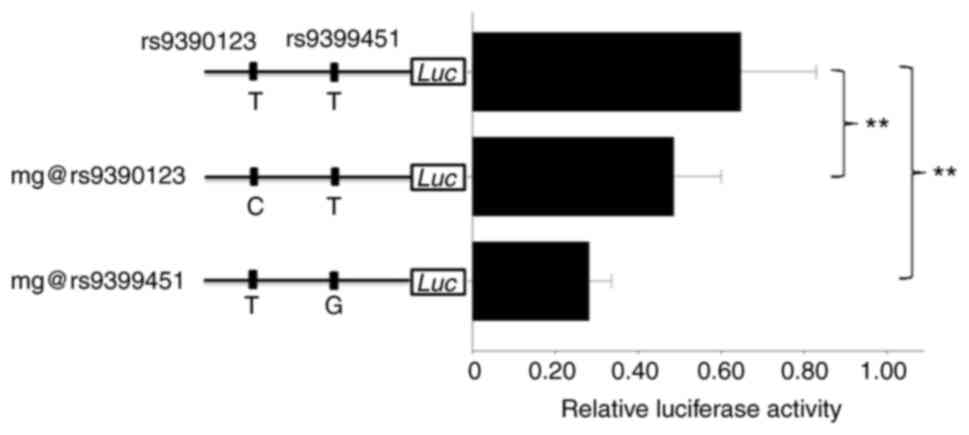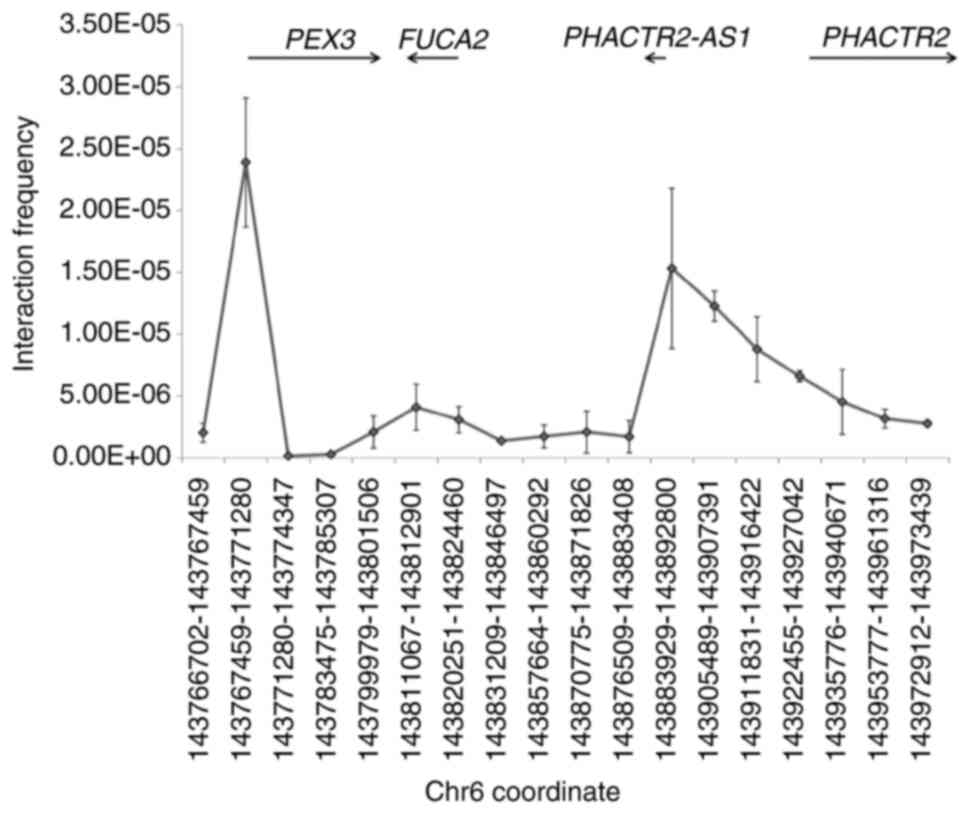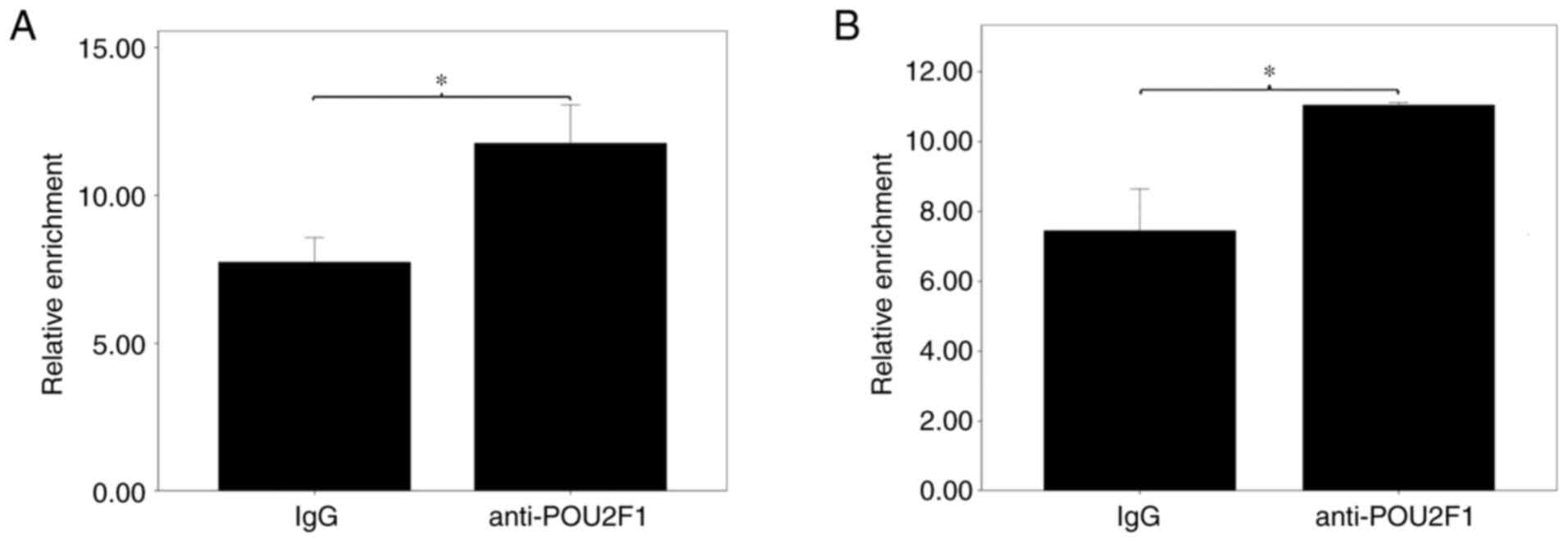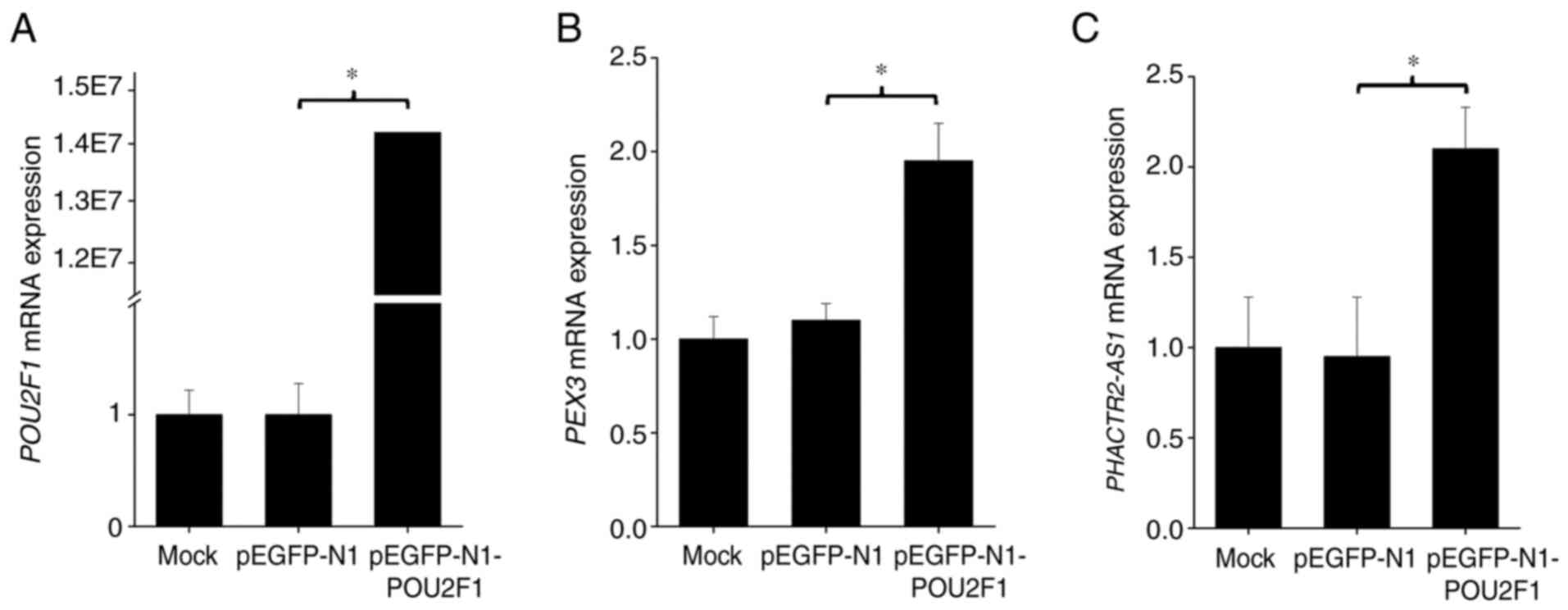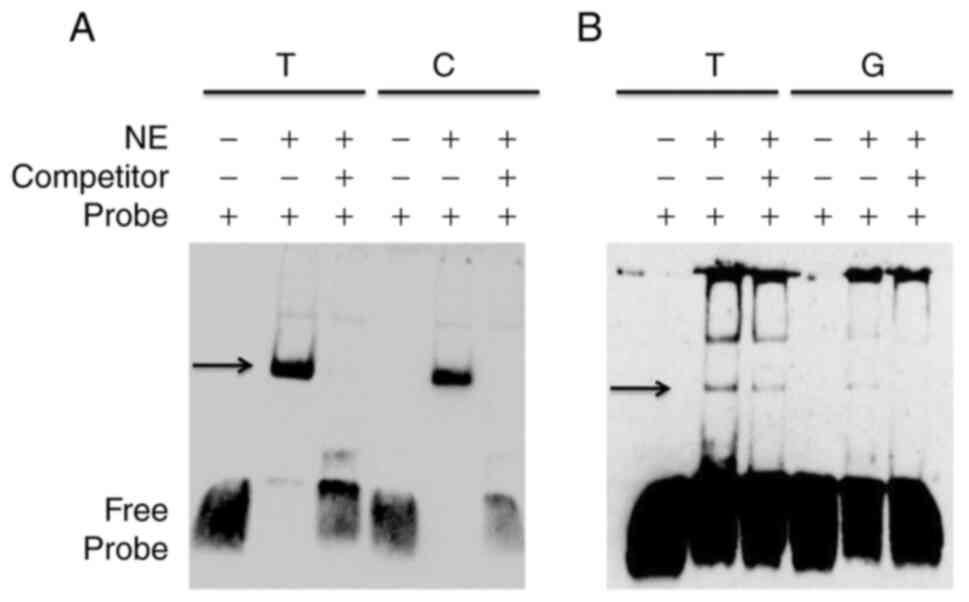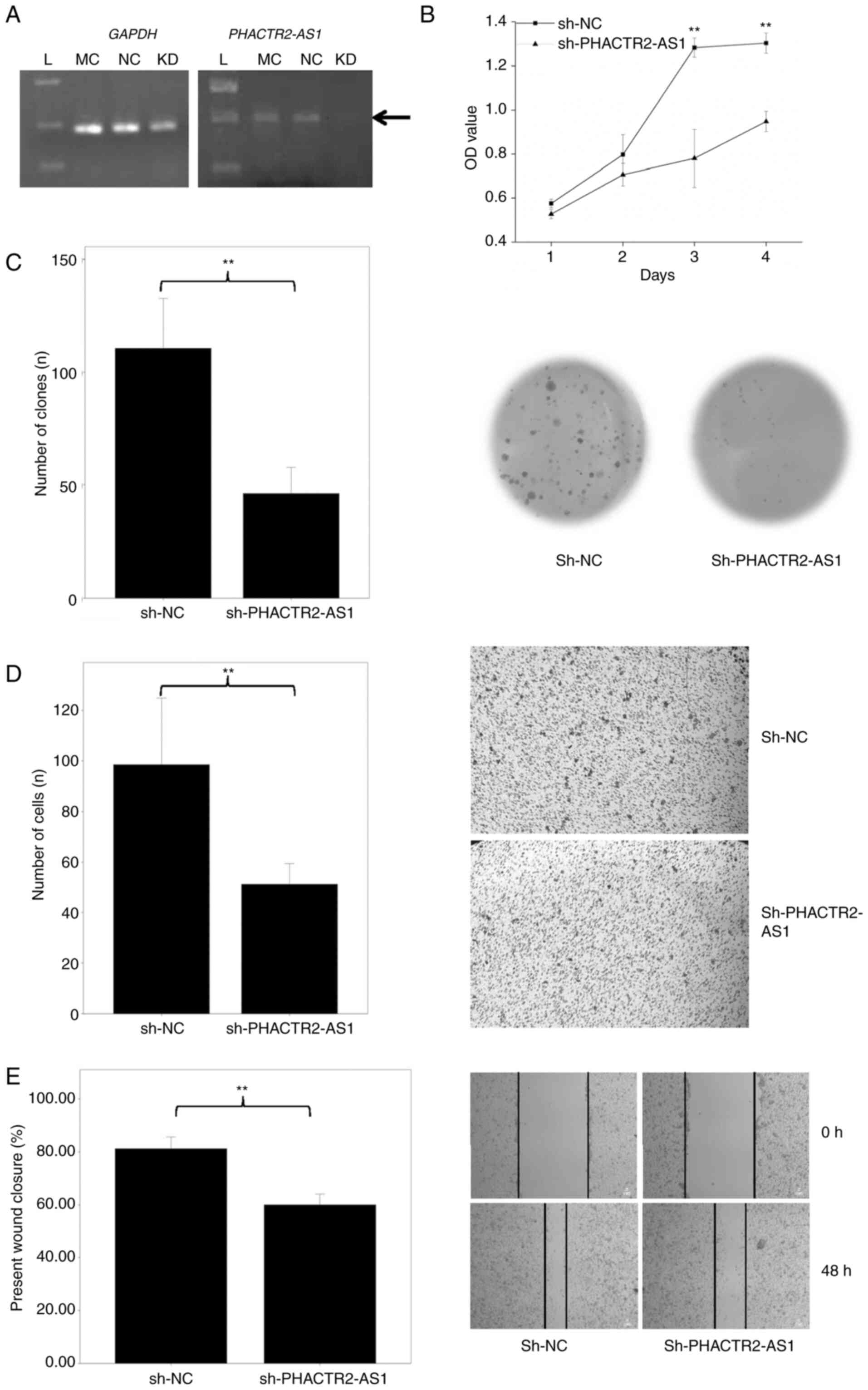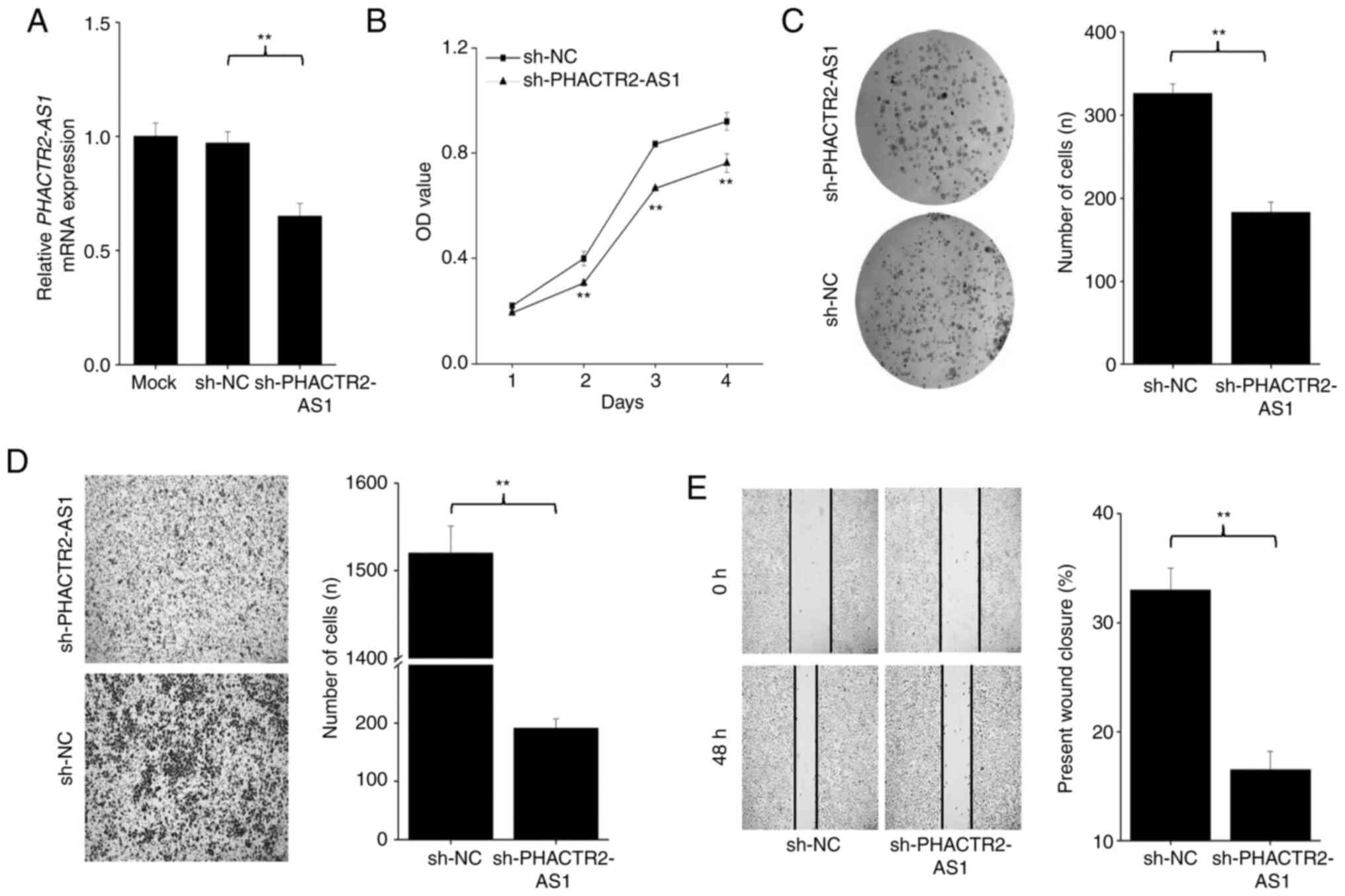|
1
|
Bray F, Ferlay J, Soerjomataram I, Siegel
RL, Torre LA and Jemal A: Global cancer statistics 2018: GLOBOCAN
estimates of incidence and mortality worldwide for 36 cancers in
185 countries. CA Cancer J Clin. 68:394–424. 2018. View Article : Google Scholar : PubMed/NCBI
|
|
2
|
Wei Q, Cheng L, Amos CI, Wang LE, Guo Z,
Hong WK and Spitz MR: Repair of tobacco carcinogen-induced DNA
adducts and lung cancer risk: A molecular epidemiologic study. J
Natl Cancer Inst. 92:1764–1772. 2000. View Article : Google Scholar : PubMed/NCBI
|
|
3
|
Wei Q and Spitz MR: The role of DNA repair
capacity in susceptibility to lung cancer: A review. Cancer
Metastasis Rev. 16:295–307. 1997. View Article : Google Scholar : PubMed/NCBI
|
|
4
|
Wang LE, Gorlova OY, Ying J, Qiao Y, Weng
SF, Lee AT, Gregersen PK, Spitz MR, Amos CI and Wei Q: Genome-wide
association study reveals novel genetic determinants of DNA repair
capacity in lung cancer. Cancer Res. 73:256–264. 2013. View Article : Google Scholar : PubMed/NCBI
|
|
5
|
International HapMap Consortium, . The
International HapMap Project. Nature. 426:789–796. 2003. View Article : Google Scholar : PubMed/NCBI
|
|
6
|
1000 Genomes Project Consortium, . Auton
A, Brooks LD, Durbin RM, Garrison EP, Kang HM, Korbel JO, Marchini
JL, McCarthy S, McVean GA and Abecasis GR: A global reference for
human genetic variation. Nature. 526:68–74. 2015. View Article : Google Scholar : PubMed/NCBI
|
|
7
|
Barrett JC, Fry B, Maller J and Daly MJ:
Haploview: Analysis and visualization of LD and haplotype maps.
Bioinformatics. 21:263–265. 2005. View Article : Google Scholar : PubMed/NCBI
|
|
8
|
Yang YC, Fu WP, Zhang J, Zhong L, Cai SX
and Sun C: rs401681 and rs402710 confer lung cancer susceptibility
by regulating TERT expression instead of CLPTM1L in east Asian
populations. Carcinogenesis. 39:1216–1221. 2018. View Article : Google Scholar : PubMed/NCBI
|
|
9
|
Kochl S, Niederstatter H and Parson W: DNA
extraction and quantitation of forensic samples using the
phenol-chloroform method and real-time PCR. Methods Mol Biol.
297:13–30. 2005.PubMed/NCBI
|
|
10
|
Chen Z, Zhou ZY, He CC, Zhang JL, Wang J
and Xiao ZY: Down-regulation of LncRNA NR027113 inhibits cell
proliferation and metastasis via PTEN/PI3K/AKT signaling pathway in
hepatocellular carcinoma. Eur Rev Med Pharmacol Sci. 22:7222–7232.
2018.PubMed/NCBI
|
|
11
|
Chen QF, Hu CF, Sun K and Lang YP: LncRNA
NR027113 promotes malignant progression of gastric carcinoma via
EMT signaling pathway. Eur Rev Med Pharmacol Sci. 23:4746–4755.
2019.PubMed/NCBI
|
|
12
|
Chen Z, Yu W, Zhou Q, Zhang J, Jiang H,
Hao D, Wang J, Zhou Z, He C and Xiao Z: A novel lncRNA IHS promotes
tumor proliferation and metastasis in HCC by regulating the ERK-
and AKT/GSK-3β-signaling pathways. Mol Ther Nucleic Acids.
16:707–720. 2019. View Article : Google Scholar : PubMed/NCBI
|
|
13
|
Pessa HK, Will CL, Meng X, Schneider C,
Watkins NJ, Perälä N, Nymark M, Turunen JJ, Lührmann R and
Frilander MJ: Minor spliceosome components are predominantly
localized in the nucleus. Proc Natl Acad Sci USA. 105:8655–8660.
2008. View Article : Google Scholar : PubMed/NCBI
|
|
14
|
Tristan C, Shahani N, Sedlak TW and Sawa
A: The diverse functions of GAPDH: Views from different subcellular
compartments. Cell Signal. 23:317–323. 2011. View Article : Google Scholar : PubMed/NCBI
|
|
15
|
ENCODE Project Consortium: An integrated
encyclopedia of DNA elements in the human genome. Nature.
489:57–74. 2012. View Article : Google Scholar
|
|
16
|
Calo E and Wysocka J: Modification of
enhancer chromatin: What, how, and why? Mol Cell. 49:825–837. 2013.
View Article : Google Scholar : PubMed/NCBI
|
|
17
|
Allen PB, Greenfield AT, Svenningsson P,
Haspeslagh DC and Greengard P: Phactrs 1-4: A family of protein
phosphatase 1 and actin regulatory proteins. Proc Natl Acad Sci
USA. 101:7187–7192. 2004. View Article : Google Scholar : PubMed/NCBI
|
|
18
|
de Duve C: The peroxisome: A new
cytoplasmic organelle. Proc R Soc Lond B Biol Sci. 173:71–83. 1969.
View Article : Google Scholar
|
|
19
|
Fransen M, Lismont C and Walton P: The
peroxisome-mitochondria connection: How and why? Int J Mol Sci.
18:11262017. View Article : Google Scholar : PubMed/NCBI
|
|
20
|
Prasad S, Gupta SC and Tyagi AK: Reactive
oxygen species (ROS) and cancer: Role of antioxidative
nutraceuticals. Cancer Lett. 387:95–105. 2017. View Article : Google Scholar : PubMed/NCBI
|
|
21
|
Dahabieh MS, Di Pietro E, Jangal M,
Goncalves C, Witcher M, Braverman NE and Del Rincón SV: Peroxisomes
and cancer: The role of a metabolic specialist in a disease of
aberrant metabolism. Biochim Biophys Acta Rev Cancer. 1870:103–121.
2018. View Article : Google Scholar : PubMed/NCBI
|
|
22
|
Sugiura A, Mattie S, Prudent J and McBride
HM: Newly born peroxisomes are a hybrid of mitochondrial and
ER-derived pre-peroxisomes. Nature. 542:251–254. 2017. View Article : Google Scholar : PubMed/NCBI
|
|
23
|
Li J, Han L, Roebuck P, Diao L, Liu L,
Yuan Y, Weinstein JN and Liang H: TANRIC: An interactive open
platform to explore the function of lncRNAs in cancer. Cancer Res.
75:3728–3737. 2015. View Article : Google Scholar : PubMed/NCBI
|
|
24
|
Chu W, Zhang X, Qi L, Fu Y, Wang P, Zhao
W, Du J, Zhang J, Zhan J, Wang Y, et al: The
EZH2-PHACTR2-AS1-Ribosome axis induces genomic instability and
promotes growth and metastasis in breast cancer. Cancer Res.
80:2737–2750. 2020. View Article : Google Scholar : PubMed/NCBI
|
|
25
|
Yuan F, Miao Z, Chen W, Wu F, Wei C, Yong
J and Xiao C: Long non-coding RNA PHACTR2-AS1 promotes tongue
squamous cell carcinoma metastasis by regulating Snail. J Biochem.
168:651–657. 2020. View Article : Google Scholar : PubMed/NCBI
|
|
26
|
Golding SE, Morgan RN, Adams BR, Hawkins
AJ, Povirk LF and Valerie K: Pro-survival AKT and ERK signaling
from EGFR and mutant EGFRvIII enhances DNA double-strand break
repair in human glioma cells. Cancer Biol Ther. 8:730–738. 2009.
View Article : Google Scholar : PubMed/NCBI
|
|
27
|
Sato A, Sunayama J, Matsuda K, Seino S,
Suzuki K, Watanabe E, Tachibana K, Tomiyama A, Kayama T and
Kitanaka C: MEK-ERK signaling dictates DNA-repair gene MGMT
expression and temozolomide resistance of stem-like glioblastoma
cells via the MDM2-p53 axis. Stem Cells. 29:1942–1951. 2011.
View Article : Google Scholar : PubMed/NCBI
|
|
28
|
de Laval B, Pawlikowska P, Barbieri D,
Besnard-Guerin C, Cico A, Kumar R, Gaudry M, Baud V and Porteu F:
Thrombopoietin promotes NHEJ DNA repair in hematopoietic stem cells
through specific activation of Erk and NF-κB pathways and their
target, IEX-1. Blood. 123:509–519. 2014. View Article : Google Scholar : PubMed/NCBI
|
|
29
|
Liu Q, Turner KM, Alfred Yung WK, Chen K
and Zhang W: Role of AKT signaling in DNA repair and clinical
response to cancer therapy. Neuro Oncol. 16:1313–1323. 2014.
View Article : Google Scholar : PubMed/NCBI
|
|
30
|
Sun Y, Zhai L, Ma S, Zhang C, Zhao L, Li
N, Xu Y, Zhang T, Guo Z, Zhang H, et al: Down-regulation of RIP3
potentiates cisplatin chemoresistance by triggering HSP90-ERK
pathway mediated DNA repair in esophageal squamous cell carcinoma.
Cancer Lett. 418:97–108. 2018. View Article : Google Scholar : PubMed/NCBI
|
|
31
|
Rezatabar S, Karimian A, Rameshknia V,
Parsian H, Majidinia M, Kopi TA, Bishayee A, Sadeghinia A, Yousefi
M, Monirialamdari M and Yousefi B: RAS/MAPK signaling functions in
oxidative stress, DNA damage response and cancer progression. J
Cell Physiol. 2019.(Online Ahead of Print). View Article : Google Scholar : PubMed/NCBI
|
|
32
|
Toulany M, Kasten-Pisula U, Brammer I,
Wang S, Chen J, Dittmann K, Baumann M, Dikomey E and Rodemann HP:
Blockage of epidermal growth factor receptor-phosphatidylinositol
3-kinase-AKT signaling increases radiosensitivity of K-RAS mutated
human tumor cells in vitro by affecting DNA repair. Clin Cancer
Res. 12:4119–4126. 2006. View Article : Google Scholar : PubMed/NCBI
|
|
33
|
Kao GD, Jiang Z, Fernandes AM, Gupta AK
and Maity A: Inhibition of phosphatidylinositol-3-OH kinase/Akt
signaling impairs DNA repair in glioblastoma cells following
ionizing radiation. J Biol Chem. 282:21206–21212. 2007. View Article : Google Scholar : PubMed/NCBI
|
|
34
|
Chen YR, Liu MT, Chang YT, Wu CC, Hu CY
and Chen JY: Epstein-Barr virus latent membrane protein 1 represses
DNA repair through the PI3K/Akt/FOXO3a pathway in human epithelial
cells. J Virol. 82:8124–8137. 2008. View Article : Google Scholar : PubMed/NCBI
|
|
35
|
Marampon F, Gravina GL, Di Rocco A,
Bonfili P, Di Staso M, Fardella C, Polidoro L, Ciccarelli C,
Festuccia C, Popov VM, et al: MEK/ERK inhibitor U0126 increases the
radiosensitivity of rhabdomyosarcoma cells in vitro and in vivo by
downregulating growth and DNA repair signals. Mol Cancer Ther.
10:159–168. 2011. View Article : Google Scholar : PubMed/NCBI
|
|
36
|
Battle A, Brown CD, Engelhardt BE and
Montgomery SB; GTEx Consortium; Laboratory, Data Analysis&
Coordinating Center (LDACC)-Analysis Working Group; Statistical
Methods groups-Analysis Working Group; Enhancing GTEx (eGTEx)
groups; NIH Common Fund; NIH/NCI; NIH/NHGRI; NIH/NIMH; NIH/NIDA
Biospecimen Collection Source Site-NDRI; Biospecimen Collection
Source Site-RPCI, : Genetic effects on gene expression across human
tissues. Nature. 550:204–213. 2017. View Article : Google Scholar : PubMed/NCBI
|
|
37
|
Gagneur J, Stegle O, Zhu C, Jakob P,
Tekkedil MM, Aiyar RS, Schuon AK, Pe'er D and Steinmetz LM:
Genotype-environment interactions reveal causal pathways that
mediate genetic effects on phenotype. PLoS Genet. 9:e10038032013.
View Article : Google Scholar : PubMed/NCBI
|
|
38
|
Umans BD, Battle A and Gilad Y: Where are
the disease-associated eQTLs? Trends Genet. 37:109–124. 2021.
View Article : Google Scholar : PubMed/NCBI
|















